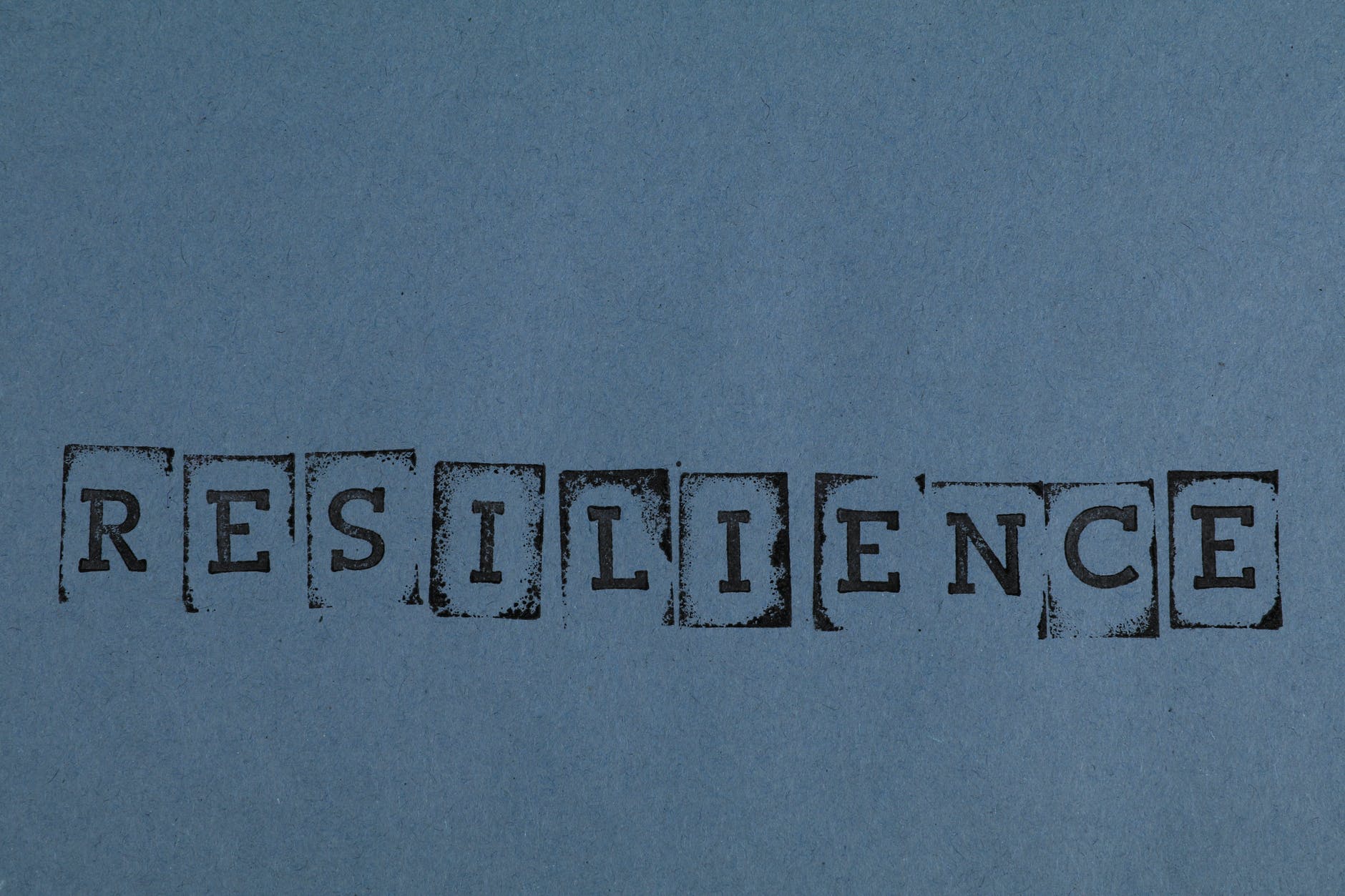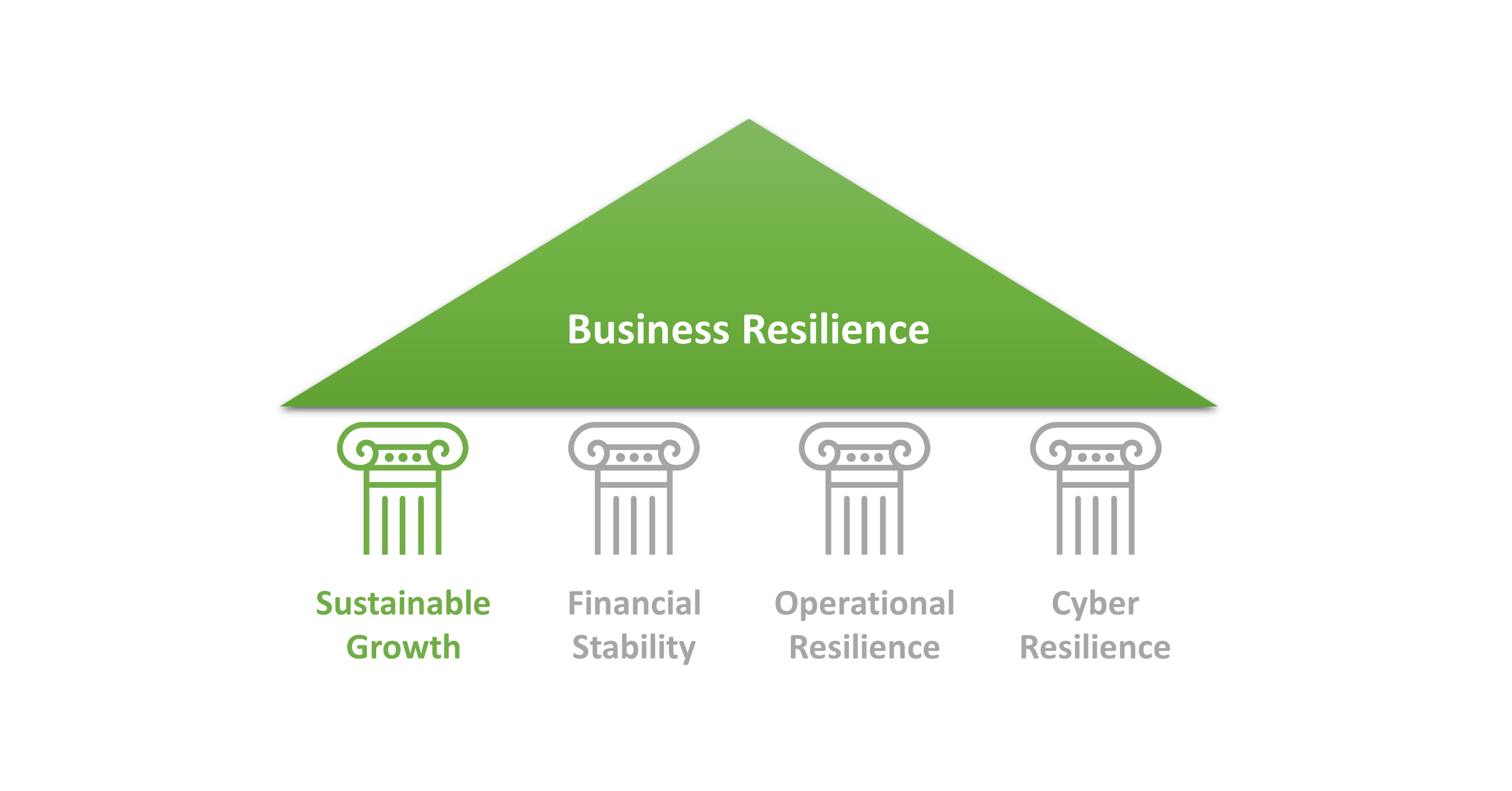In the previous newsletter, I began exploring the intricate web of building business resilience. I highlighted its necessity as more than a buzzword but as a vital lifeline in times of crisis and a foundation for business growth. We recognized that resilience and business continuity transcend mere survival tactics, encompassing a broader spectrum that touches every facet of our large or small business.
In this edition, I provide an overview of the core pillars of business resiliency: Financial Stability, Sustainable Growth, Operational Resilience, and a newer vital component, Cyber Resilience. Each of these pillars plays a crucial role in not just crisis management or disaster recovery but in emerging stronger and more dynamic. Further on in the series, I will deep dive into each of these pillars.
Financial Stability – The Bedrock for Resilient Organizations
At its core, financial resilience is having the resources to sustain critical operations through a disruptive event – be it a market downturn, a sudden expense, or a global crisis. It’s about creating a buffer that can absorb shocks and provide the flexibility to maneuver and thrive through economic ebbs and flows.
Achieving financial stability involves diversifying revenue streams to mitigate risk, practicing effective budget management for smart resource allocation, and building emergency funds to cushion unforeseen expenses. Diversification opens new income streams, while strategic budgeting ensures long-term benefits. An emergency fund provides stability, keeping the organization steady during financial uncertainties.
Financial resilience is not an end state but a continuous process of evaluation, adaptation, and strategic planning. It forms the foundation upon which other elements of business resilience are built. By securing this foundation, business leaders set the stage for enduring stability, whatever the economic weather may bring.
Sustainable Growth: Future-Proofing Businesses
Sustainable growth goes hand in hand with financial stability and income diversification and is key for resilience planning. It’s creating and delivering products and services that not only drive profit but also generate positive impacts for society and the environment. By prioritizing sustainability, businesses can build strong, lasting relationships with consumers, who are increasingly making choices based on ethical considerations.
Furthermore, sustainable growth requires innovative product development and a constant lookout for the right market opportunities. This paves the way for long-term success and resilience in a world where consumer preferences and regulatory landscapes are constantly shifting. Companies will also become more attractive to investors and potential employees who are seeking to align with an organization that demonstrates a commitment to making a meaningful difference.
Operational Resilience – Navigating the Unpredictable
Operational agility is rooted in being prepared and able to change course swiftly in response to potential disruptions and opportunities. This agility allows businesses to respond effectively to sudden market changes, supply chain disruptions, or other potential threats.
Enhancing operational resilience involves streamlining business operations, integrating technology for automation and informed decision-making, and empowering teams for agility. Adopting lean processes reduces waste and allows rapid adaptation to changing conditions. Technologies like AI and cloud computing enhance flexibility. Empowering employees with training, tools, and decision-making authority fosters a responsive workforce, crucial for resilience in dynamic situations.
Operational agility is not just about business continuity planning; it’s proactively seeking opportunities for improvement and growth. It involves a mindset of continuous learning and adaptation, ensuring that your organization is not just resilient but also primed for success in an ever-changing business landscape.
Cyber Resilience – Thriving in a Digital World
We live in an era where digital presence is integral to almost every business (digital transformation). As a direct implication, cyber resilience has become a cornerstone of any robust business strategy. This means ensuring your business can withstand and recover from digital disruptions, be they cyber threats, technological failures, or changes in digital market trends.
Building cyber resilience is grounded in robust cybersecurity measures, technology adaptability, and online brand protection. Staying current with technological advancements and the integration of new tools enhances both efficiency and security. Managing and monitoring the digital footprint across websites and social media is vital to maintaining a secure and positive online presence, safeguarding the brand’s integrity in the digital realm.
Digital resilience is more than just defense; it involves proactive adaptation and strategic recovery in the face of digital disruptions. By embedding cyber resilience into your business strategy, you ensure that your digital assets, reputation, and operations are protected and agile in a rapidly evolving digital world.
Key Takeaways
As we wrap up this high-level exploration of the core pillars of business resilience, it’s clear that building a resilient business is a multifaceted endeavor. Financial resilience, sustainable growth, operational agility, and digital resilience are not standalone concepts but interwoven threads in the fabric of a robust business model. Each plays a critical role in ensuring that your business can not only withstand but also capitalize on the challenges and opportunities presented by our dynamic world.
– Holistic Approach: Resilience in business requires a comprehensive approach, addressing financial health, operational efficiency, strategic foresight, and cyber security.
– Proactive Stance: Building resilience is an ongoing, proactive process. It’s about anticipating and preparing for future challenges, not just reacting to them.
– Empowerment and Adaptation: Resilient businesses empower their teams, embrace change, and adapt strategies to thrive in fluctuating environments.



